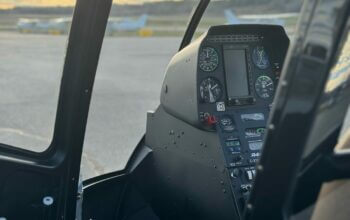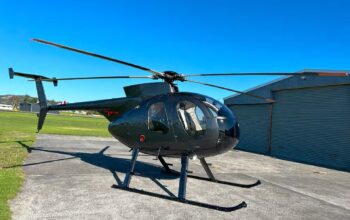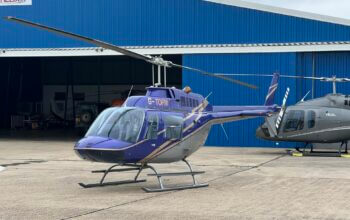Estimated reading time 4 minutes, 39 seconds.
Gulfstream Aerospace Corp. has announced the Gulfstream G650ER, Gulfstream G600, Gulfstream G500, Gulfstream G550 and Gulfstream G280 made the company’s first carbon-neutral flights, traveling from Savannah, Ga., to the Las Vegas area for the 2019 National Business Aviation Association (NBAA) Convention & Exhibition. The five flights were made using a combination of sustainable aviation fuel (SAF) and carbon offsets.

“Gulfstream already designs extremely fuel-efficient, quiet aircraft capable of using sustainable aviation fuel, which we offer to customers and use regularly for our corporate operations, so using carbon offsets was the natural next step to advancing and elevating our sustainability commitment,” said Mark Burns, president, Gulfstream. “Reducing our industry’s carbon footprint is paramount for ensuring a sustainable future for aviation.”
Gulfstream’s fleet flew to Henderson Executive Airport near Las Vegas on a 30/70 blend of low-carbon, drop-in SAF and traditional, petroleum-based Jet A fuel. The emissions associated with using 70 percent Jet A were more than offset by the company’s purchase, for a per-flight-hour fee, of verified emission reduction credits through a third-party offset provider. The offsets represented more than 200 percent of the carbon emitted during the trip.
After NBAA-BACE, set for Oct. 22 through 24, the Gulfstream fleet will fly back to Savannah/Hilton Head International Airport on SAF and carbon offsets.
“The offset provider we are using supports projects and technologies that reduce environmental effects worldwide,” Burns said.
Gulfstream’s sustainability strategy helps support the business aviation industry goals established by the NBAA, the General Aviation Manufacturers Association and the International Business Aviation Council. In addition to the goal of carbon-neutral growth by 2020, the industry-wide targets include an improvement in fuel-efficiency and a reduction in total carbon dioxide emissions.
Since 2016, Gulfstream has used SAF in daily operations for its corporate, demonstration, Customer Support and Flight Test fleets. The company has made more than 500 flights on SAF, totaling nearly 1 million nautical miles/1.9 million kilometers and saving approximately 1,200 metric tons of CO2. In addition to using SAF at its Savannah headquarters, Gulfstream sells SAF to customers at its Long Beach, Calif., facility, where it is also used for all Completions and delivery flights.
Gulfstream also announced a new service that reinforces the company’s commitment to sustainability and provides Gulfstream operators with the opportunity to reduce the carbon footprint associated with their flights.
Participants pay an annual fee based on aircraft utilization to fund activities that generate an equal reduction in carbon emissions.
“This service responds to our customers’ growing commitment to sustainability and aligns well with our environmental strategy, which includes designing some of the quietest, most fuel-efficient aircraft in the industry and promoting and using sustainable aviation fuel,” said Burns. “Many of our operators want to leverage the benefits of business aviation in an eco-friendly way and this allows them to do so. Through their participation in this service, they can be part of the solution for meeting aviation’s goals for global emissions reduction.”
Gulfstream’s carbon offset service is among a comprehensive portfolio of offerings in the company’s turnkey support, operations and maintenance program, Aircraft Ownership Service (AOS), launched in late 2017. Designed to simplify a Gulfstream operator’s experience, AOS enables aircraft owners, flight departments and management companies to customize aircraft services for their needs. Customers choose the services, set the contract term and then receive a consolidated monthly invoice.
Gulfstream does not charge operators a fee to administer its carbon offset service, and there is no contractual commitment. Customers simply let Gulfstream know their projected annual flight hours and are invoiced a monthly fee, which is invested in environmentally beneficial activities through a third-party provider chosen by Gulfstream.
“Our provider will report annually what projects the carbon offset funds are used for,” Burns said. “These certified and verified projects that benefit the climate have included wind energy, forest management, farm power and recovery and utilization of landfill gas.”
One carbon offset represents the reduction of 1 metric ton/2,205 pounds of greenhouse gas emissions.








